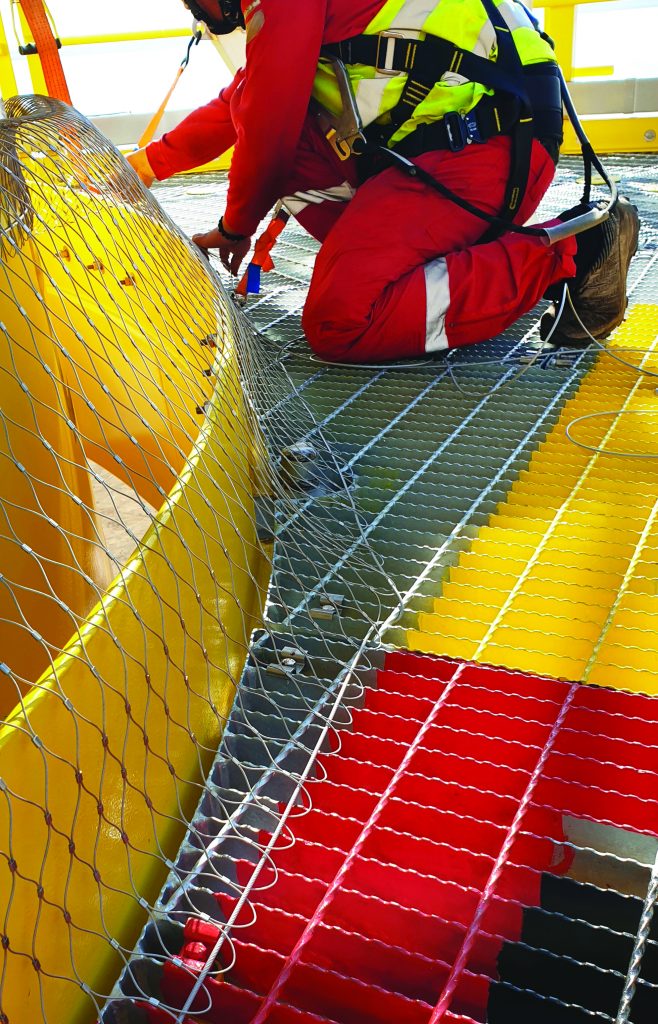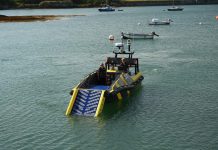Dropsafe, the leading provider of Dropped Object (DO) prevention solutions, recently announced that offshore wind developer Formosa I Offshore Windfarm (FOWI) has adopted the Dropsafe Net dropped object prevention system, in a bespoke installation across the 20 Siemens Gamesa turbines at the Formosa I offshore wind farm.
Six operational turbines at Formosa I, near Miaoli, off the west coast of Taiwan, have already been equipped with the Dropsafe Net system, ahead of the remaining 14 turbines that will be installed during summer 2019.
With the construction of the 130-MW project heralding the start of rapid growth in the Taiwanese offshore wind market, there is a clear imperative to ensure that, with this growth, comes the key health and safety lessons from the established markets. Mitigating known and established risks in the early key phases of project development and construction, and factoring in those new risks that may arise from extreme weather events, will enable the emerging Taiwanese offshore wind industry to manage costs and liabilities as it builds out its offshore wind program.
As the mature European offshore wind and oil and gas markets have shown, DOs are an ever-present, increasing threat to safe and cost-effective project development and operations in offshore wind. DOs include materials carried by personnel, lifted or carried from support vessels, or fixtures fitted to the wind turbine, such as lights, ventilation louvres, or hatches falling from height.

Failure to mitigate DO risks presents a clear threat to the safety of personnel, the integrity of equipment, financial performance, and ultimately the reputation of offshore wind firms and their high-profile stakeholders.
Due to the construction, design, and installation requirements specific to the region, the increased potential for dropped objects was identified during the design risk assessment. Dropsafe was engaged by FOWI to develop a custom system that would mitigate these risks.
Off the coast of Taiwan, where typhoons and storms are common, there is a heightened risk of fixtures and fittings becoming loose and posing a threat to on-site technicians. As such, installing robust DO prevention systems demonstrates a further commitment to “typhoon-proofing” of project infrastructure.
FOWI have taken an industry-leading approach in their adoption of DO prevention technology, setting a new safety benchmark, not only for the Taiwanese market, but also for the global offshore wind sector.
The Dropsafe Net is a stainless-steel mesh net engineered to securely enclose and tether overhead fixtures, mitigating the risk of them falling and threatening the safety of personnel. It is an application-specific solution for a wide range of fixture types, enabling wind-energy companies to confidently improve workplace safety and minimize risks to operational integrity.
At Formosa I, a bespoke Dropsafe Net design, made of SUS 316 Japanese stainless-steel, has been installed between the external landing platform and the tower of the Siemens Gamesa SWT-6.0-154 turbines. This allows FOWI to mitigate the risk of Dropped Objects falling from the landing platform into the sea.
“With this market-first installation, Formosa Offshore Wind is rising to the challenge of preventing dropped object incidents and acting as an industry safety pioneer,” said Mike Rice, commercial director of Dropsafe. “While there is a particular emphasis on Taiwanese projects to be ‘typhoon-proof,’ there are lessons to be learned by the global offshore wind sector in terms of the approach to tackling a major safety risk.”
FOWI’s Formosa II wind farm is scheduled to complete construction in Q3 2019 and is set to maintain FOWI’s leadership position in the mitigation of DO risk.
More info www.dropsafe.com

























